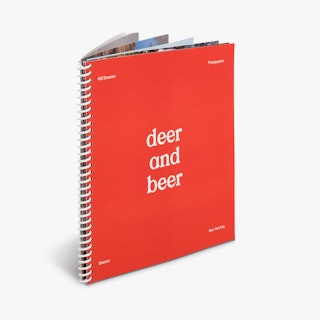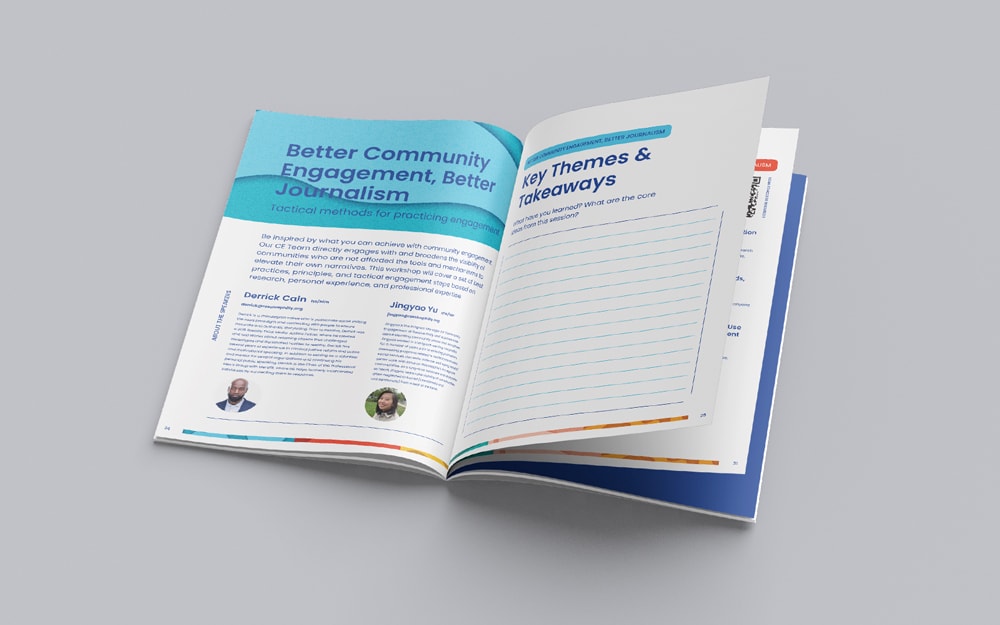The Top 5 Benefits of Modern Booklet Printing Techniques
The Top 5 Benefits of Modern Booklet Printing Techniques
Blog Article
The Essential Overview to Recognizing Brochure Printing Options and Techniques
The process of booklet printing entails several considerations that can significantly impact the end product. From selecting the appropriate layout and size to understanding the subtleties of binding techniques, each choice plays an essential duty. Furthermore, elements such as paper supply and printing methods further affect the efficiency of the pamphlet. As one navigates these options, it comes to be necessary to understand how they adjoin and what that means for the total outcome.
Recognizing Brochure Dimensions and styles
When considering booklet printing, recognizing the various layouts and dimensions offered is important for attaining the desired discussion. Booklets can be created in many styles, consisting of saddle-stitched, spiral-bound, and perfect-bound, each offering unique benefits. Typical dimensions range from basic letter (8.5 x 11 inches) to smaller sized options like A5 (5.8 x 8.3 inches), enabling flexibility based on web content and target audience.Selecting the appropriate size can affect both the layout and visitor interaction. Bigger sizes may match aesthetically driven content, while smaller styles might be more user-friendly and portable. Furthermore, the variety of web pages influences the choice of binding technique, as thicker brochures might call for sturdier bindings. Ultimately, comprehending these elements enables an extra tailored approach, guaranteeing that the last item aligns with the intended message and aesthetic, enhancing the general efficiency of the interaction.
Selecting the Right Paper Supply

Binding Approaches: Considerations and alternatives
When it involves binding methods for brochures, a number of options are available, each with distinct advantages. Saddle stitch binding uses a cost-efficient remedy for thinner brochures, while perfect binding techniques offer an even more sleek appearance for thicker magazines. Wire-O binding stands apart for its toughness and convenience of usage, making it ideal for files that require versatility.
Saddle Stitch Binding
Saddle stitch binding provides a functional and economical remedy for constructing pamphlets, making it a preferred selection amongst services and publishers. This binding method involves folding sheets of paper in fifty percent and stapling them along the fold line, developing a orderly and neat look. Typically ideal for pamphlets with a reduced page count, saddle sewing is suitable for publications, brochures, and instructional products. The simpleness of this technique enables fast production and is frequently favored for advertising products or short runs. However, it is necessary to keep in mind that saddle stitch binding may not be ideal for thicker pamphlets, as the spine might not stand up under enhanced weight. On the whole, it stays a reputable option for lots of printing projects.
Perfect Binding Strategies
Perfect binding is a widely made use of technique that gives a expert and sleek finish to magazines and booklets. This technique entails gluing the pages with each other at the spine utilizing a solid adhesive, enabling for a tidy edge and the capability to hold a bigger number of web pages contrasted to saddle stitching. Perfect binding is specifically suitable for thicker brochures, such as catalogs and annual records, where a sturdy, flat back is desired. Furthermore, it supplies the option for a printed cover that can be made to enhance visual allure. Factors to consider such as web page matter, paper weight, and the intended use of the booklet ought to be taken right into account, as they can influence durability and overall quality.
Wire-O Binding Choices
Wire-O binding, understood for its toughness and adaptability, supplies an excellent option for booklets that require easy page turning and a professional appearance. This binding method employs a series of metal loopholes that hold pages securely, enabling them to exist level when open. It is particularly ideal for discussions, directories, and manuals as a result of its durable nature. Wire-O binding is readily available in different colors and diameters, suiting various page matters and densities. Additionally, it permits the inclusion of tabs and covers, improving the brochure's overall aesthetic. Factors to consider for Wire-O binding include the choice of cord shade, the size of the loopholes, and the degree of customization desired, every one of which can exceptionally affect the last product's appearance and performance.
Digital vs. Offset Printing: Which Is Best for You?
When selecting a printing approach for brochures, understanding the distinctions between electronic and offset printing is essential. Digital printing uses contemporary technology More hints to generate premium prints quickly and affordably, making it excellent for short runs or tasks needing quick turn-around times. It enables for modification, supplying the capacity to publish on-demand with minimal waste.In comparison, offset printing is a typical method that succeeds in producing big amounts with constant top quality. It involves moving ink from a plate to a rubber covering, then to the paper, which leads to exact information and dynamic shades. Nonetheless, counter printing commonly needs longer configuration times and is more economical for larger volumes.Ultimately, the option between digital and counter printing relies on task demands, budget plan, and desired amount. For little, time-sensitive tasks, electronic could be the most effective option, while offset may be preferable for bigger, top quality manufacturings.

Designing Your Brochure: Tips and Ideal Practices
When making a pamphlet, cautious attention to design, font style option, and color usage can substantially enhance its efficiency. A well-structured format guides the reader's eye, while appropriate typefaces ensure readability and communicate the preferred tone. Furthermore, reliable use of color can evoke feelings and emphasize crucial info, making the overall design a lot more impactful.
Choosing the Right Format
Just how can one efficiently select the appropriate design for a pamphlet? First, it is important to assess the brochure's function and target market. A clean, arranged format boosts readability and engagement. Making use of a grid system can aid in aligning components regularly, creating a specialist look. Additionally, integrating aesthetic pecking order through differing sizes and positionings of images and message can direct the reader's eye and highlight key info. It is additionally essential to leave adequate white room, which protects against overcrowding and enables far better emphasis. Checking different formats through mock-ups can give understanding right into just how the layout carries out in real-world situations, ensuring that the last item fulfills both aesthetic and functional needs. Practical Choosing Suitable Fonts
An appropriate typeface can greatly boost the general design of a brochure, matching the layout and strengthening the web content's message. The option of font styles should think about readability, especially for body text, as it guarantees the info comes to all readers. Sans-serif font styles are frequently chosen for electronic layouts, while serif typefaces can lend a typical feel in published products. It's recommended to restrict font options to two or 3 to maintain aesthetic comprehensibility. Furthermore, font style dimension plays an essential function; headings need to be not overwhelming but distinct, while body text ought to fit for reading. When selecting fonts, placement with the booklet's theme and target market is crucial for reliable communication and visual appeal.
Reliable Usage of Shade
Shade functions as an effective device in pamphlet layout, guiding and forming perceptions viewers feelings. It can evoke sensations of calmness, enjoyment, or depend on, depending on the tones picked. Designers must think about color theory concepts, making certain that the chosen palette lines up with the booklet's message and target audience. For example, making use of warm colors like red and orange can produce necessity, while cooler tones like green and blue foster tranquility.Additionally, contrast plays an important function; corresponding colors can boost readability and aesthetic appeal. Consistency in shade usage throughout web pages better enhances brand name identification and cohesion. Inevitably, effective shade application not just records attention but likewise enhances go to the website the booklet's objective, making it an important aspect of effective style.
Ending Up Touches: Coatings and Special Results
While many think about the material and format of a pamphlet one of the most essential aspects, the completing touches, such as layers and unique effects, play a crucial duty in enhancing its overall allure. Coatings can give protection and sturdiness, ensuring that the brochure withstands wear and tear. Matte coatings use an innovative, non-reflective surface area, while glossy finishes can make colors show up more attractive and vibrant. Special impacts, like embossing or foil stamping, add a responsive dimension that can develop a remarkable impression. These methods can highlight certain Discover More areas, attracting attention to crucial info or creating aesthetic rate of interest. Furthermore, UV finishing can provide a high-shine finish that boosts the total look.Together, these finishing touches not only boost the booklet's visual however additionally connect professionalism and reliability and attention to information, inevitably leaving a lasting effect on the reader.
Cost Factors To Consider for Brochure Printing
Comprehending the various cost factors to consider for pamphlet printing is vital for services and organizations intending to maximize their budget plans. Key elements influencing expenses include the selection of binding, paper, and ink approaches. Better products, such as superior paper or specialized inks, usually increase the general cost. In addition, the dimension and page count of the pamphlet play a substantial role; larger pamphlets need more resources and time to produce.Another vital consideration is the printing method, whether digital or countered, as each has its very own rates structure and viability for various quantities. Organizations should likewise consider layout prices, which can vary based on complexity and the use of specialist services. Inevitably, delivery and handling fees can contribute to the total amount, particularly for huge orders. By assessing these elements, companies can make informed decisions that line up with their monetary capabilities while attaining the wanted quality in their published materials.
Regularly Asked Questions
What Are the Ecological Impacts of Booklet Printing?
The ecological influences of brochure printing include deforestation from paper manufacturing, carbon discharges from transportation, and waste generation from thrown out materials - Booklet Printing. Sustainable techniques, such as using recycled paper and environmentally friendly inks, can alleviate these impacts
Just How Can I Make Certain Color Precision in My Pamphlet?
To guarantee color precision in a booklet, one must make use of adjusted screens, use specialist color profiles, conduct examination prints, and pick top quality printing services that provide shade matching and proofing options for finest outcomes.
What Is the Normal Turnaround Time for Brochure Printing?
The normal turnaround time for booklet printing varies relying on the complexity and quantity - Booklet Printing. Generally, it varies from a few days to 2 weeks, affected by variables such as printing techniques and ending up demands
Exist Minimum Order Quantities for Brochure Printing?

Can I Print Pamphlets in Numerous Languages?
Printing booklets in multiple languages is feasible. Numerous printing solutions offer options for multilingual or bilingual layouts, permitting reliable communication. Careful preparation warranties that create elements suit different languages without jeopardizing readability or aesthetics. Additionally, variables such as paper supply and printing techniques further influence the performance of the pamphlet. When taking into consideration booklet printing, understanding the various layouts and sizes offered is crucial for accomplishing the desired discussion. When picking a printing technique for booklets, comprehending the differences in between electronic and offset printing is crucial. Additionally, the size and page count of the booklet play a significant role; larger brochures need more sources and time to produce.Another important factor to consider is the printing method, whether digital or balanced out, as each has its own pricing structure and viability for various quantities. The environmental impacts of pamphlet printing consist of deforestation from paper production, carbon emissions from transport, and waste generation from disposed of products.
Report this page